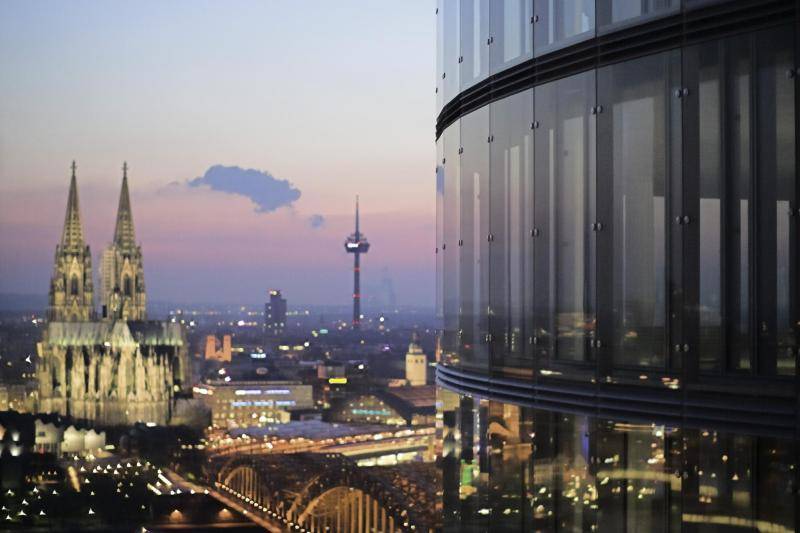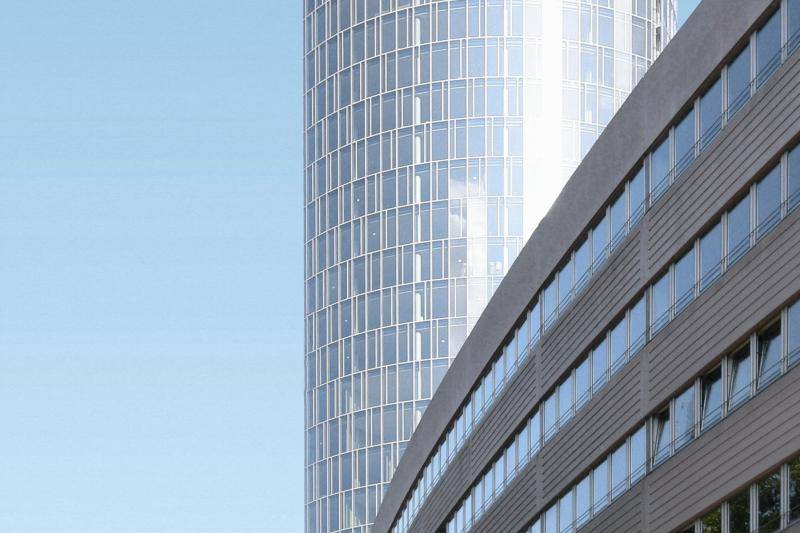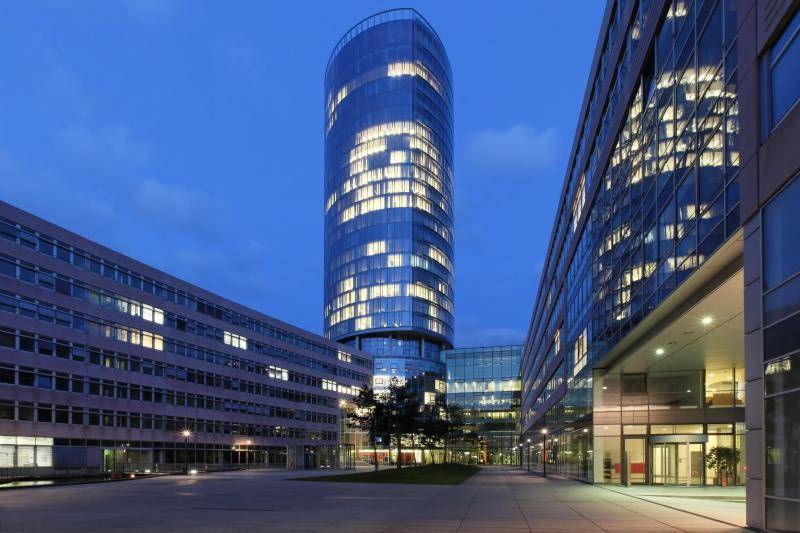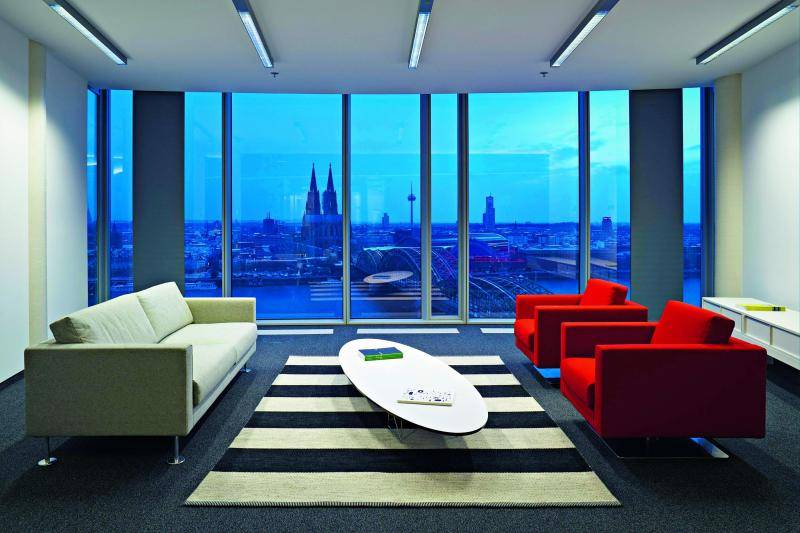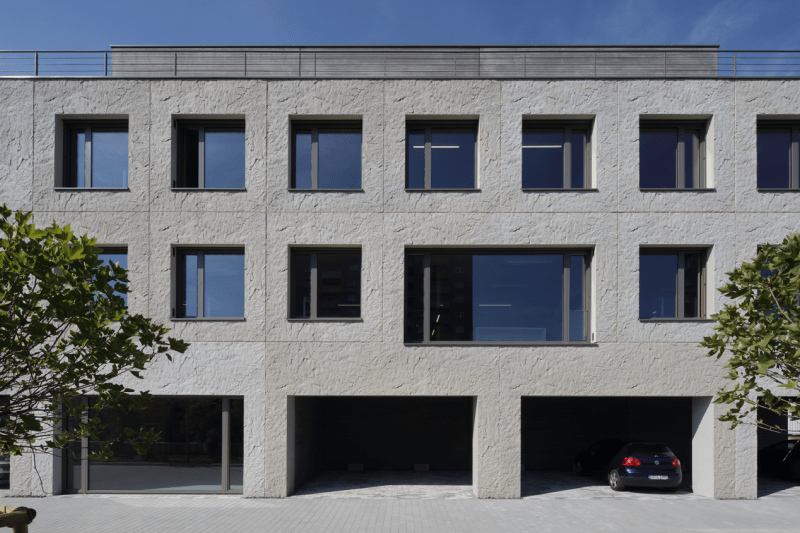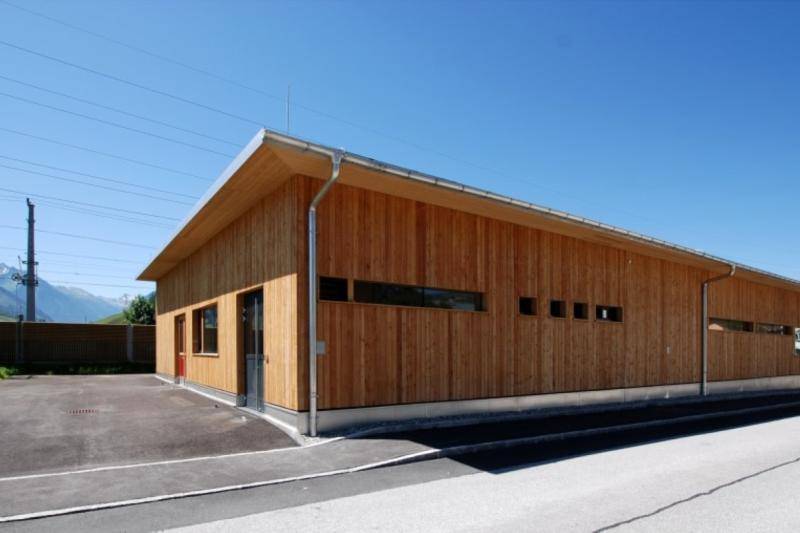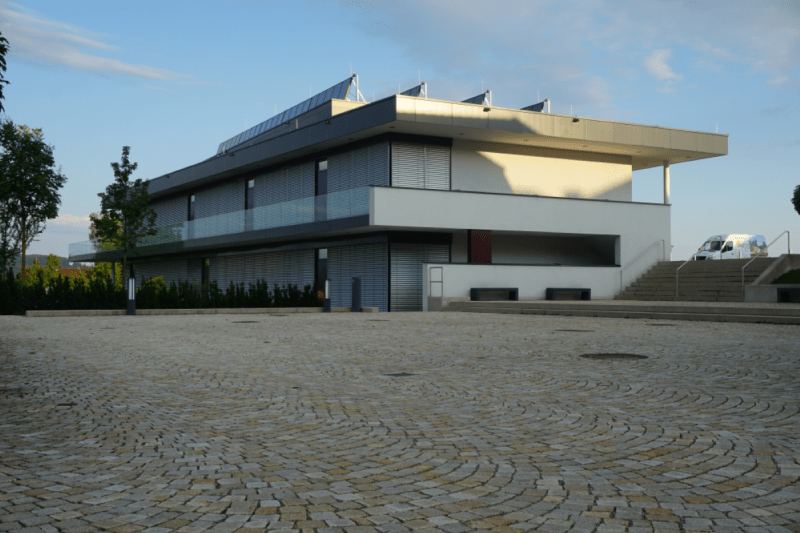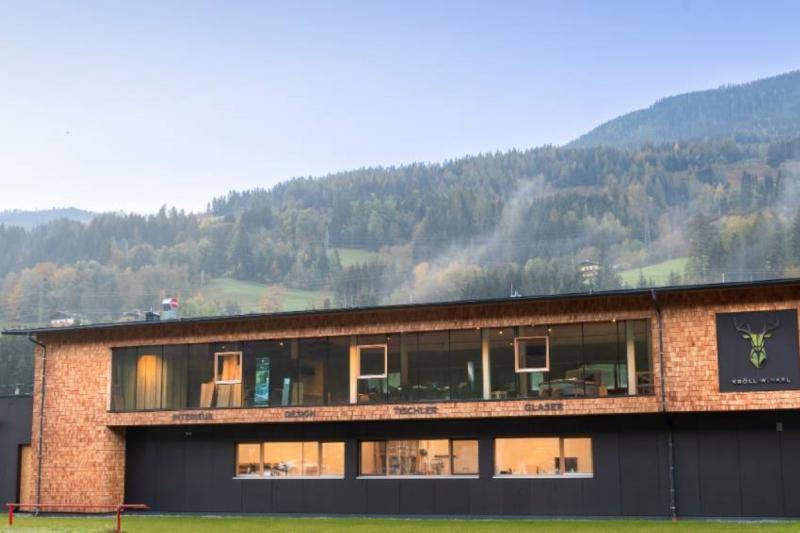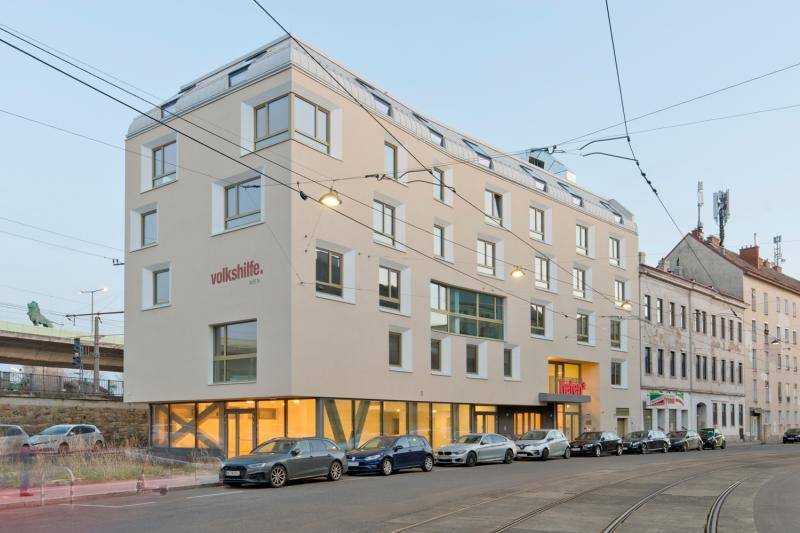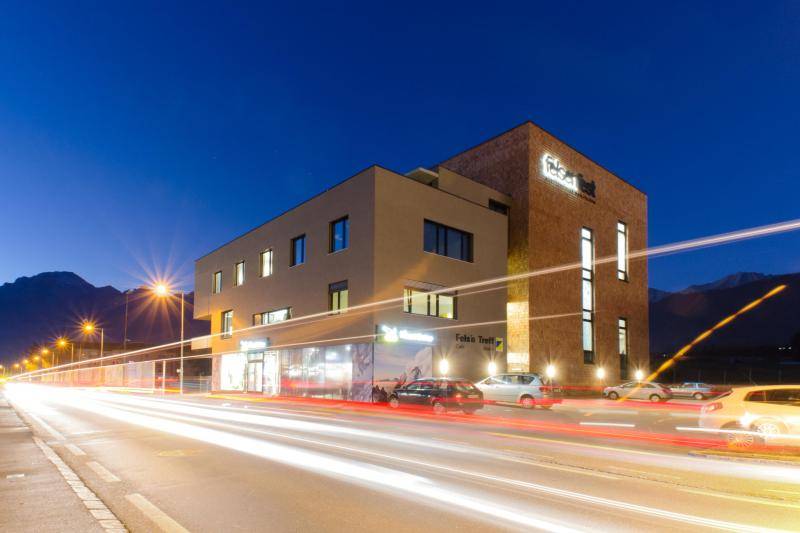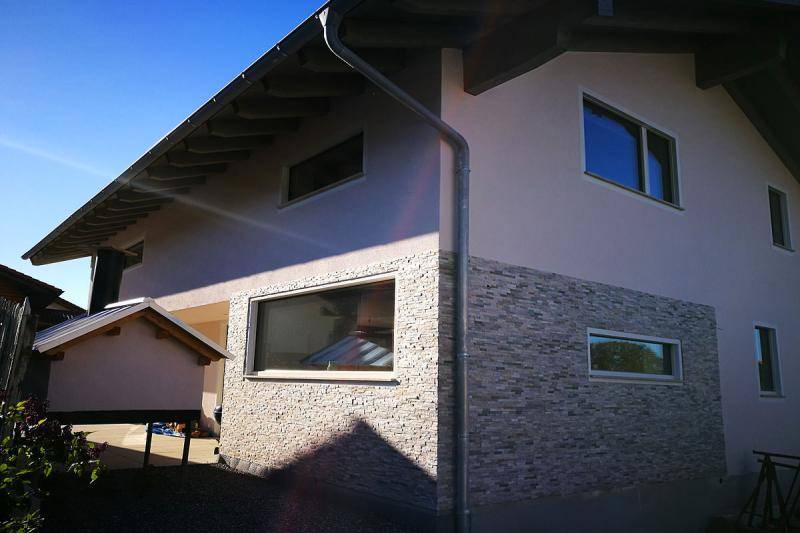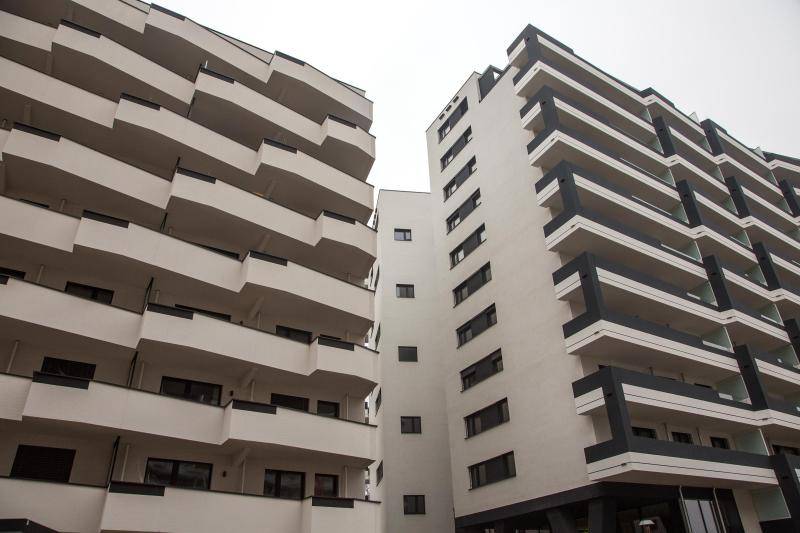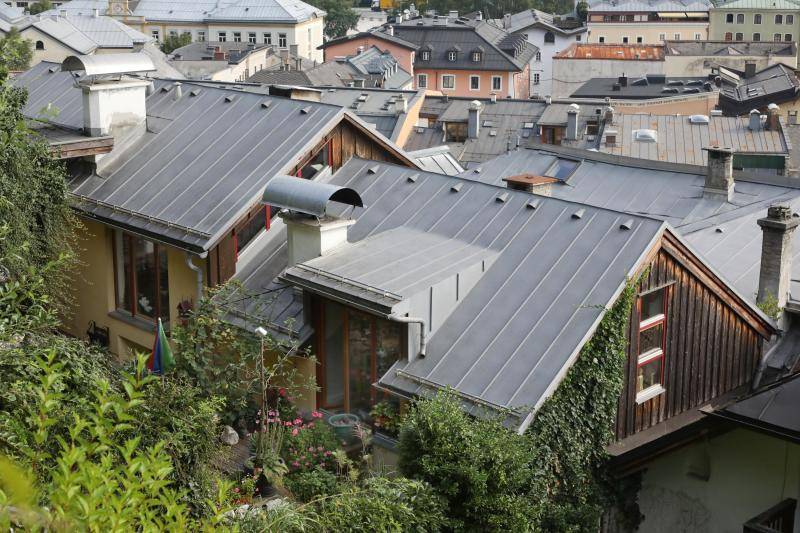Köln Triangle
The Köln Triangle office building is located directly on the Rhine, opposite Cologne Cathedral. The ground plan shape of the 103 meter high tower is a Reuleaux triangle, made of three convex curved sides.
Rheinische Versorgungskassen, Köln
2006
Building services: Köln und Brandi Engineers
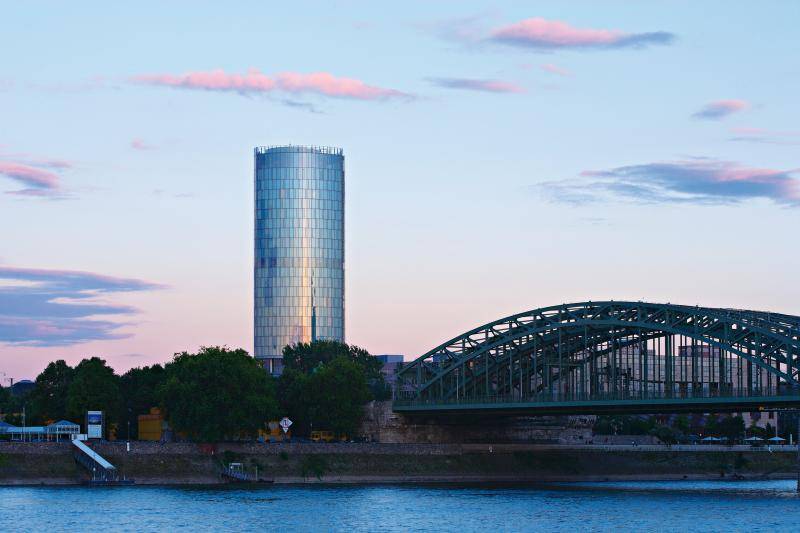
The 600-square-meter glass lobby equipped for events forms the entrance and foyer of the building with the inner courtyard. Restaurants, the canteen, and rentable conference and event spaces on the 27th and 28th floors are also available to the public. All visitors can enjoy the city panorama from the top public observation deck. Thanks to its unusual Reuleaux form with three convexly curved element facades, the energy objectives of this high-rise building are already evident in its external appearance. The wankel-shaped floor plan was developed from wind and solar energy considerations and, in conjunction with the round core, results in flowing room depths that allow a flexible choice between open-plan, combi and individual offices. An innovative, decentralized technology concept makes the energy balance flexible on a floor-by-floor basis. The rear-ventilated double facade on the south side provides optimal solar protection. The two monofacades to the northeast and northwest reduce investment and operating costs without sacrificing comfort. Basic thermal conditioning using groundwater and bus-controlled façade flaps that can be opened to the outside in the two monofacades provide additional comfort.
Since the temperature of the groundwater (between eleven and 14 degrees) is not sufficient for dehumidification of the air conditioning units on the individual office floors, chillers were interposed for this purpose, which serve solely to generate the dynamic cooling capacity. In addition to the basic thermal conditioning of the ceiling-integrated concrete core temperature control system, whose re-cooling and heating is provided by heat pumps from the groundwater, this enables fast-acting correction for each room. The heating and cooling elements in the floor ensure the required air exchange even when windows are closed due to weather conditions. Exhaust air is exhausted ductlessly into the corridor via overflow elements in the system partitions. The decision to locate the technical equipment on each floor and the associated avoidance of large, continuous shafts made it possible to make the building's footprint much more efficient:
Within the building height of 103.20 meters specified by the urban planning authorities, two additional office floors were gained: one floor through the saved technical floor, and another through the saving of 20 centimeters of floor height per floor thanks to decentralized technical locations, also in relation to the floor plans. For room conditioning, the building achieves a primary energy requirement of 45.62 kWh/m2a (transmission: 25.96 kWh/m2a, ventilation: 19.66 kWh/m2a).
(Text: SUPERGELB ARCHITECTS; in shortened form)
